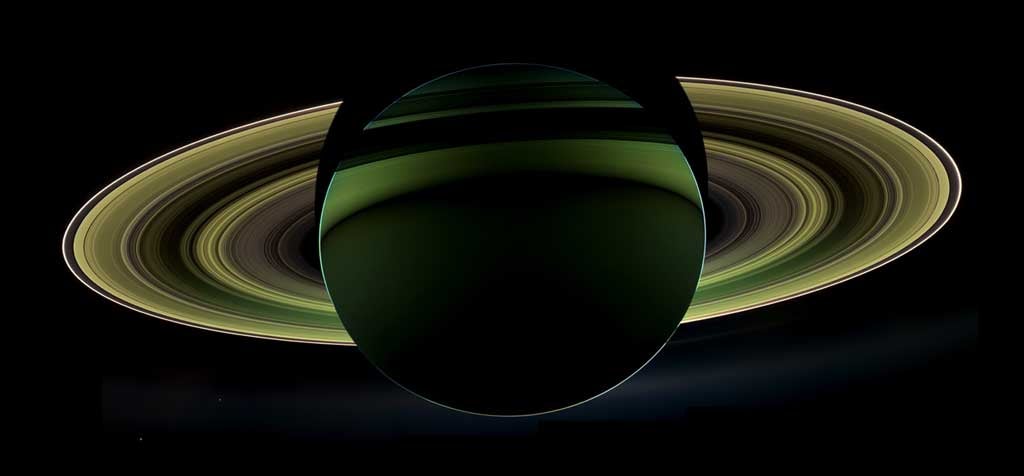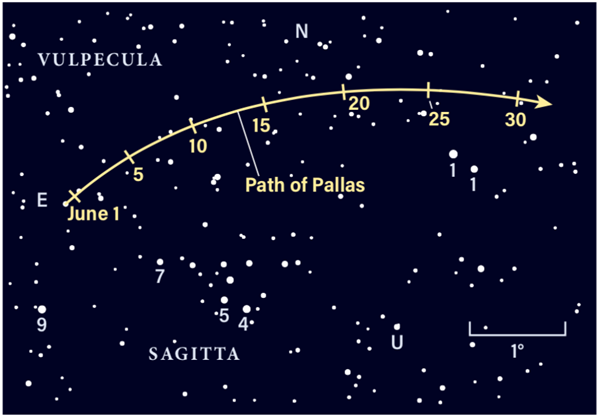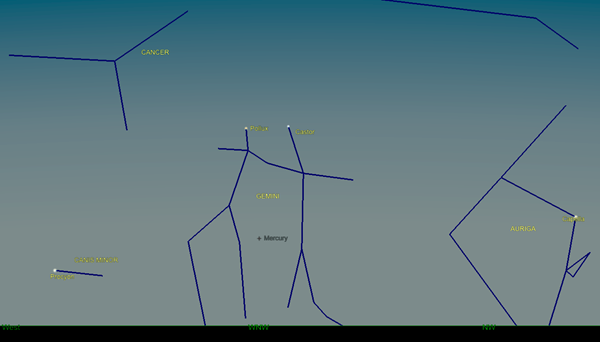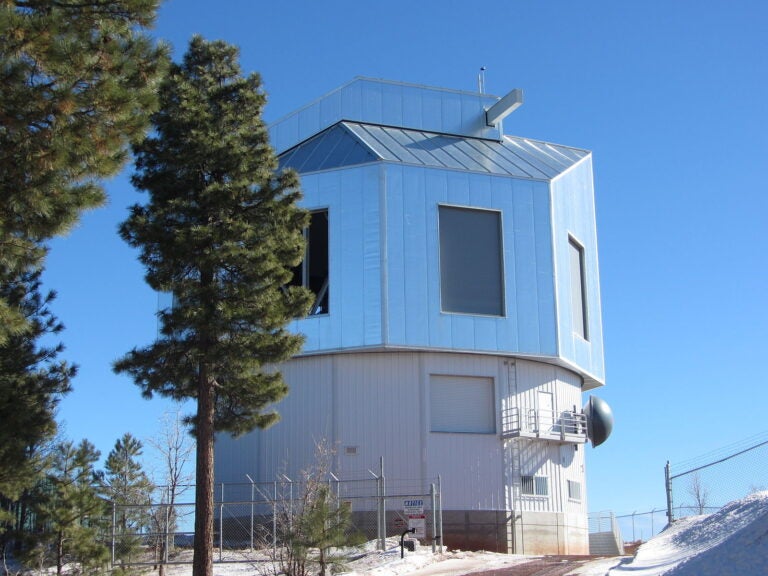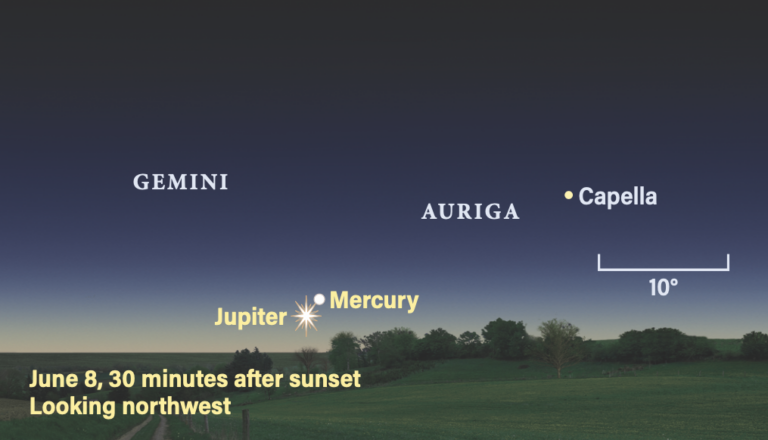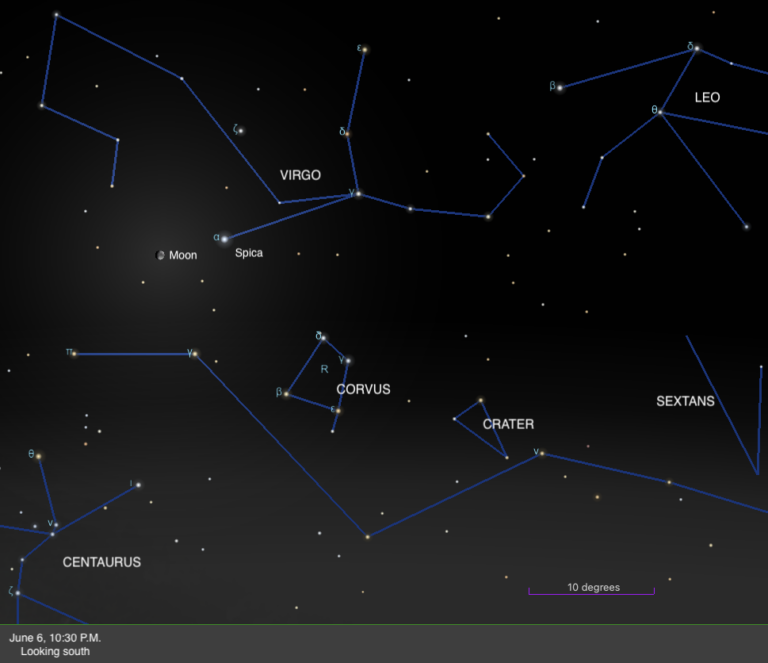Full Moon occurs today at 3:12 P.M. EDT. A penumbral lunar eclipse also takes place, fully or partially visible in eastern South America, Africa, Australia, Europe, and much of Russia. Penumbral eclipses aren’t as striking as umbral eclipses. They occur when the Moon passes through Earth’s lighter penumbra, the outer portion of our planet’s shadow.
North American observers won’t get an eclipse, but they will get a bright sky washed out by our striking satellite. Now isn’t the time to search out deep-sky objects, but it doesn’t mean nighttime observing can’t be rewarding. Instead, try some double star treats: Mizar and Alcor in Ursa Major, Albireo in Cygnus, Eta (η) Cassiopeiae in Cassiopeia, and Castor in Gemini. These beautiful multiple-star systems can all be split in small scopes. Mizar and Alcor can even be split with the naked eye if your vision — or local atmospheric seeing — is particularly good.

Astronomy is pleased to present The Complete Star Atlas, the perfect resource for stargazers of all ages. This practical guide to viewing the night sky is now available, and includes approximately 87,000 stars, 1,200 deep-sky objects, and 24 high-quality star maps. You’ll also find 50 pages of astronomy history, tips, and more from experienced Contributing Editor Michael E. Bakich.
Saturn’s largest and brightest moon, Titan, sits due south of the ringed planet in the early morning sky. In a telescope, the magnitude 9 moon should be relatively easy to spot — it’s the brightest point of light after the planet itself. Titan orbits Saturn every 16 days; on June 14 it will sit due north of the planet and will return to its most southerly point again on the 22nd.
Swing away from Saturn to the southeast in the two hours before sunrise to find the famous star Fomalhaut in the small constellation Piscis Austrinus, rising in the southeast. Magnitude 1.2 Fomalhaut is not only the brightest star in the constellation, but also one of the brightest stars in the sky, ranking 18th. Only about 25 light-years away, Fomalhaut is surrounded by a massive disk of material that astronomers believe could be forming planets. In fact, astronomers long thought they’d directly imaged one such nascent world — only to recently discover that what they’d seen was actually the aftermath of a collision between two icy planetesimals.
Sunday, June 7
The constellation Perseus climbs above the northeastern horizon a few hours before sunrise this morning. With a bright Moon on the opposite side of the sky, it’s a great time to tour the Hero’s brighter treasures, the most famous of which may be the Double Cluster, comprising NGC 884 and NGC 869 in the western (upper right) region of the constellation. These two young, bright open star clusters are about 7,600 and 6,800 light-years away, respectively, with ages between 3 million and 5 million years. In a dark sky, you may spot them without binoculars, but this morning the Moon will likely make that impossible. Binoculars or a small scope, however, will bring out increasing levels of richness in the clusters; you’ll see NGC 884 to the east of NGC 869, which lies farther west.
The constellation is also home to the famous California Nebula (NGC 1499). This emission nebula has a magnitude of roughly 6 but its dim, diffuse glow will be hard to spot even with a telescope, given the bright Moon. Return to this constellation on a moonless morning later in the month or even next month, when the 2.5°-long nebula will be higher above the horizon at the same time each night in Perseus’ eastern region. Its shape shows up best in long-exposure photographs.
Monday, June 8
Today is the 395th anniversary of the birth of Italian-French astronomer Giovanni Cassini. You most likely know the name either from the Cassini Division that separates Saturn’s A and B rings or from the NASA mission that spent over a decade exploring Saturn and its extensive system of moons. Cassini’s planetary science claim to fame is threefold: He measured the scale of the solar system, discovered four moons of Saturn, and identified the large gap in Saturn’s rings.
Early morning is the best time to get a look at the ringed planet, which rises around 11:30 P.M. local time. By 3 to 4 A.M., it’s higher in the sky for easy viewing. You can find magnitude 0.4 Saturn in the south, just 5° northeast of brilliant magnitude –2.6 Jupiter. A bright, 92-percent-lit Moon hangs nearby. Farther southwest is the familiar Teapot asterism of Sagittarius.
The disk of Saturn appears 18″ wide, while its rings stretch roughly 41″ across. Although the background sky will be bright thanks to the Moon, you may still be able to spot the dark Cassini Division, which appears as a thin gap but actually spans an average of nearly 3,000 miles (4,800 kilometers), although its width varies.
The Moon passes 2° south of Jupiter at 1 P.M. EDT today. Nine hours later, the Moon passes 3° south of Saturn at 10 P.M. EDT. But both events take place when the planets aren’t visible.
Tonight is the perfect time to seek out asteroid 2 Pallas, discovered by chance in 1802 — only a year after 1 Ceres was found. For the next few nights, Pallas is sliding through a field of several background stars, offering the perfect backdrop to catch its motion if you return more than once to see which point of light has moved — that’s your target. To find Pallas, drop 6.5° due south of Albireo, the bright, colorful double star in Cygnus the Swan. (In fact, you may want to spend some time admiring the gold and blue pair, which are easy to split in a small scope.)
Pallas itself glows at magnitude 10, just 3° south of magnitude 4.4 Anser (Alpha [α] Vulpeculae). A 4- or 6-inch scope should show the small world, even from mildly light-polluted suburban skies. Glance about 1.5° farther south of the asteroid to trace out the famous Coathanger asterism.
Wednesday, June 10
Look to the northwest after darkness falls to find the familiar pattern of the Big Dipper, which is actually an asterism, not a constellation. Asterisms are recognizable patterns of stars not officially named as a constellation. The Big Dipper forms the back haunches and tail of Ursa Major the Great Bear, and said tail is unnaturally long. But there’s a reason: The bear, once a maiden named Callisto, was changed into an animal by the Greek goddess Hera. To prevent Callisto’s son from unwittingly hunting and killing her, Zeus later flung Callisto into the sky. Zeus grabbed the bear by her tail to swing her upward, stretching it out into the pattern of stars we associate with the Dipper’s handle.
The same is true for Ursa Minor the Little Bear, who also sports a long tail. In this case, the smaller bear represents Callisto’s son Arcas, who was also turned into a bear and later thrown into the sky above by the tail. The two stars at the right of the Big Dipper’s bowl are Merak and Dubhe. These are the Pointer Stars; follow the line they create to find Polaris, the end of the Little Dipper’s handle. Polaris is the current North Star and lies due north for those in the Northern Hemisphere. As full darkness falls tonight, the faint stars of the Little Dipper’s handle and cup arc directly above Polaris.
About half an hour after sunset, a 25-percent-lit Mercury hovers roughly 10° above the west-northwestern horizon. It’s sinking fast within Gemini the Twins, whose brightest stars — Castor and Pollux — should begin to wink into the sky about 12° above the planet as the sky grows darker. Mercury will continue setting earlier each night, making it more difficult to catch as the days progress. It’s also fading by the day, currently at magnitude 1.1. It will reach magnitude 2 and sit a mere 3° above the horizon 45 minutes after sunset by June 16.
Friday, June 12
Rising about 1:30 A.M. local time and climbing higher until sunrise washes out the sky, magnitude –0.2 Mars glows less than 9° from the waning Moon this morning. Less than 2° north of the Red Planet is Neptune, the solar system’s most distant major planet. At magnitude 7.9, you can pick it out with binoculars or catch a better glimpse of its 2.3″-wide bluish disk through a telescope. The ice giant currently lies about 30 times farther from Earth than Mars, which is a mere 0.9 astronomical unit — a little less than the average Earth-Sun distance — from us at this time. Neptune will continue to track east through Aquarius until June 23, when it will reach a stationary point.
The Red Planet will pass 1.7° south of Neptune at 8 A.M. EDT, while the Moon will pass 4° south of Neptune at 7 P.M. EDT. Our satellite then passes 3° south of Mars at 8 P.M. EDT.

Our exclusive Sky Guide 2020 is now available! This free downloadable pamphlet contains a month-by-month rundown of 2020’s biggest celestial events, from Mars’ best opposition in years to the return of totality in South America this December. Check out Astronomy’s Sky Guide 2020 now!

